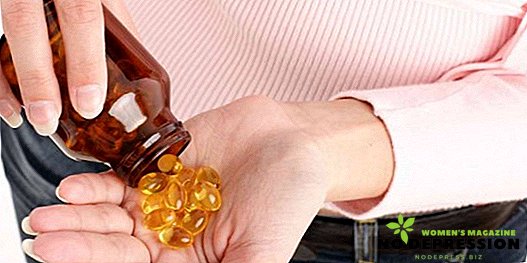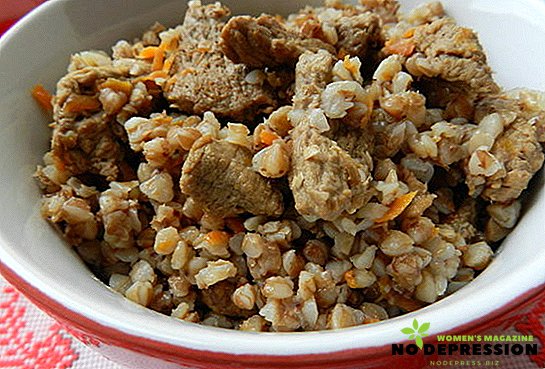In young women, the problem of urinary incontinence, as a rule, appears after difficult childbirth. In most cases, incontinence is a problem for women already in old age. With menopause, there is a significant reduction in the production of the body of such a hormone as estrogen. It is this hormone that makes the tissues of the body more elastic, including muscle tissue in the urethra.
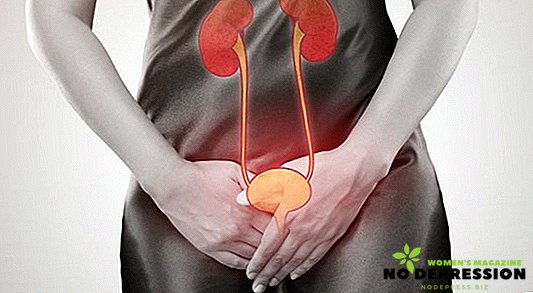
Causes and types of urinary incontinence in women
Urinary incontinence, or as they also call this deviation - incontinence, is an involuntary and uncontrollable flow of urine, which absolutely can not be in any way, whatever the willpower. There are many different reasons because of which a woman may experience such a pathology as incontinence.
In most cases, urinary incontinence in a woman may appear due to severe fatigue, or a strong overstrain. In addition, incontinence may occur due to severe childbirth, as a result of which overdrain and ruptures of muscle tissue located near the pelvic floor and near the perineum have occurred.
Also, this pathology may eventually appear in a woman as a result of:
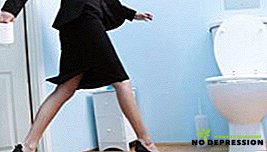 Overweight.
Overweight.- Conducting gynecological operations. For example, incontinence may occur as a side effect after removing a cyst or tumor in the area of the uterus or ovaries.
- Climax. Accompanied by the appearance of strong hormonal changes in the woman's body, resulting in a weakening of the sphincter.
Considering the causes of incontinence in women, it is also necessary to consider the features of the anatomy of the female body. As is known, stress incontinence in women occurs much more often than in men. This is due to the fact that the urethra in men is longer than in women (24 cm and 4 cm, respectively).
There are several types of urinary incontinence. The most common is the so-called stress incontinence. This kind of incontinence can be triggered by slight stress, such as, for example, coughing or severe sneezing. In addition, this type of incontinence appears as a result of lifting weights, while playing sports. In some cases, stress incontinence may occur in a woman during intercourse.
In the event of urge incontinence, a woman has an unbearable urge to urinate, during the development of which she does not always have time to react in a timely manner. It should be noted that a characteristic feature of this type of incontinence is that when it appears, the bladder can be filled with liquid less than half, that is, contain a small amount of urine.
There is also another type of incontinence, the so-called mixed form, in which incontinence occurs. A characteristic feature of this type of incontinence is that it combines the symptoms of the first two types of incontinence.
Diagnosis of the disease
 When a woman has such a pathology as urinary incontinence, diagnostic methods, allowing to accurately establish the diagnosis - incontinence, are carried out according to a standard plan. First of all, a woman is credited with passing a physical examination by a gynecologist.
When a woman has such a pathology as urinary incontinence, diagnostic methods, allowing to accurately establish the diagnosis - incontinence, are carried out according to a standard plan. First of all, a woman is credited with passing a physical examination by a gynecologist.
Also, when diagnosing this pathology, the so-called cough test is required. It is worth noting that when passing this test, the patient’s bladder must be filled.
In addition, the diagnosis of incontinence provides for a general analysis of urine, as well as taking its seeding for the presence of microflora. Quite often patients undergoing urinary incontinence are credited with undergoing ultrasound of the bladder and also of the kidneys.
Treatment of urinary incontinence in women
To begin the course of treatment of such a pathology as urinary incontinence, you can only accurate and at the same time, the final diagnosis. In the treatment of incontinence can be applied several different in its direction and effects on the body treatment methods:
- non-surgical non-drug;
- medication;
- surgical.
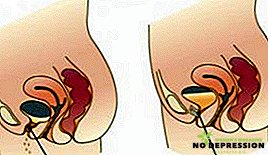 The surgical method involves surgical intervention in the body during the diagnosis - incontinence. Basically, this method of treatment of incontinence is used when a woman has stress urinary incontinence. To date, to eliminate this pathology developed about 250 different methods of surgical intervention in the body.
The surgical method involves surgical intervention in the body during the diagnosis - incontinence. Basically, this method of treatment of incontinence is used when a woman has stress urinary incontinence. To date, to eliminate this pathology developed about 250 different methods of surgical intervention in the body.
Quite often, in surgery, so-called minimally invasive methods are used to eliminate the stress form of incontinence. For example, one of the most common invasive methods involves throwing a loop made from synthetic fabrics.
After such surgeries, the patient can be discharged from the hospital within 24 hours and sent home. According to official statistics, about 85% of those who have undergone a similar operation continue to live a full, fulfilling life.
For young women, for the treatment and elimination of incontinence, more conservative methods of treatment of this pathology can be approached, which do not provide for surgical intervention in the body and the use of medicines.
For non-drug, non-surgical method of treatment of incontinence, should include:
- Conducting physiotherapy.
- Constant training of the bladder.
- Perform a variety of physical exercises that strengthen the pelvic floor.
The bladder training complex provides for the creation of a special schedule and urination plan. In order to learn how to perform it, it is recommended to undergo preliminary training under the close supervision and supervision of the attending physician.
When performing such a plan, the number of intervals between urination should be gradually increased. Due to this, a certain stereotype of trips to the toilet begins to be developed.
During the treatment of urinary incontinence should not be neglected and physiotherapy. After all, as you know, thanks to it, muscles strengthen, and ligaments are made more elastic. During physiotherapy, an electromagnetic impulse can be used, various heatings are applied, as well as microcurrents, through the use of which the level of blood supply in the pelvic area is significantly improved.
Kegel exercises with incontinence
The most effective non-drug method of eliminating such problems as urinary incontinence, are Kegel exercises. Arnold Kegel is a world-renowned gynecologist. In the 1930s of the twentieth century, he developed a special set of exercises, thanks to the implementation of which the strengthening of the muscle mass in the perineum and pelvic area occurs.
In addition, Kegel exercises help to normalize the blood circulation of the organs located in the pelvis, to eliminate such ailment as urinary incontinence, to alleviate the symptoms of menopause.
 In total there are several types of these Kegel exercises:
In total there are several types of these Kegel exercises:
- Waves.
- Content.
- Reduction.
- Elevator.
The essence of the exercise called - "Reduction", is to alternately reduce and relax the muscles located in the pelvic floor area. This exercise should be performed about 3 times in one day for 10-15 repetitions.
The exercise, which is called “Content”, is done in its technique, just like the previous exercise, “Abbreviation”. However, a distinctive feature of the "content" is that when it is performed, the muscles must be left in a tense state for several seconds.
An exercise called "Lift" is perfect for women. It implies alternating tension and contraction of the rings located in the muscle tube. Exercise - "Waves" means alternately reducing all muscle groups located near the pelvic floor.
Medication Treatment
Drug treatment is best applied to eliminate the urgent type of urinary incontinence. As a rule, antispasmodics are used to treat incontinence. In some cases, antidepressants may also be prescribed to the patient. In the treatment of this pathology, a drug called Driptan has recommended itself well.
This drug is capable of:
- have a relaxing effect on the muscles located in the bladder;
- suppress all impulses generated by the central nervous system, causing urging to the toilet.
Also, medication involves the use of hormonal drugs. Such drugs can increase the level of estrogen in the body, thereby increasing the elasticity and elasticity of soft tissues. Most often, vaginal suppositories called Ovestin are used as such drugs.
Treatment of urinary incontinence in women using traditional medicine methods
 In alternative medicine there are many recipes and methods to get rid of this pathology, like urinary incontinence. In most cases, fennel seeds are used to treat this disorder.
In alternative medicine there are many recipes and methods to get rid of this pathology, like urinary incontinence. In most cases, fennel seeds are used to treat this disorder.
To prepare the broth, you need to take 1 tablespoon of seeds and pour 250 ml of them. hot water. It is necessary to insist this broth not less than 2 hours. For insisting it is best to use a thermos. After cooling, this broth should be drunk all at once.
To eliminate the frequent urge to urinate, in traditional medicine is used a decoction made from corn silk.
For its preparation, you need to take 1 teaspoon of stigmas and pour them 250-300 ml. boiling water. The time of infusion of this broth is about 10 minutes. Then the broth must be filtered through cheesecloth. A decoction of corn silk can be used as an alternative to tea. This decoction can be used in combination, together with honey (for 300 ml. Decoction not more than 1 tsp. Honey).
Changes in lifestyle with the appearance of pathology and methods of its prevention
With the appearance of such pathology as urinary incontinence, a woman should even more carefully monitor her hygiene. Also, with the appearance of incontinence, a woman must use so-called urological pads. These pads are able to absorb a large amount of liquid and eliminate the harsh odors. Thanks to their use, the socialization of women in society is greatly simplified and the quality of life improves with the appearance of incontinence.
To prevent the appearance of this pathology, a woman, in order to prevent, must adhere to several rules. First, a woman should not lift large weights, the weight of which exceeds the mark of 5 kg. Secondly, the representatives of the fair sex, you need enough to keep track of their weight. After all, as you know, with obesity and overweight, there is a weakening of the muscles of the bladder.
In addition, a woman should protect herself from a variety of stressful situations, not overwork and lead an active lifestyle (move as much as possible). During the position - sitting, women are not recommended to throw one leg over the other. Indeed, otherwise the blood supply to the bladder is disturbed.


 Overweight.
Overweight.





